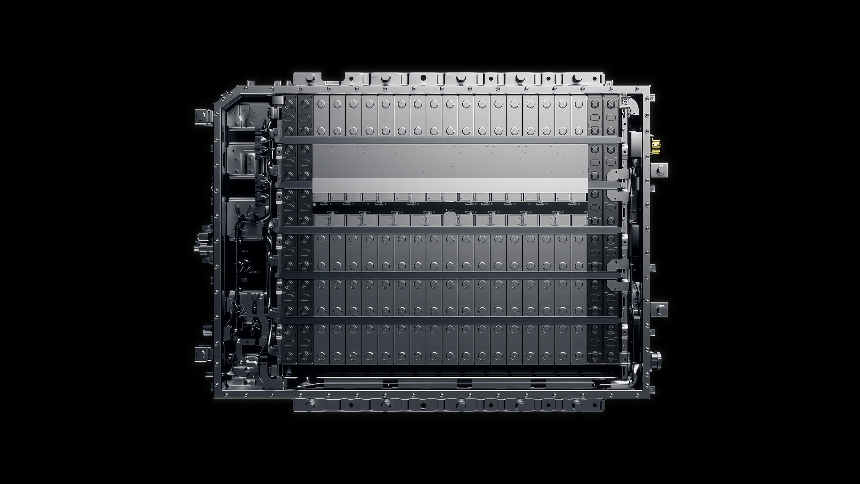Sign up for daily news updates from CleanTechnica on email. Or follow us on Google News!
Perovskite solar cells have been talked up since the early 2000s as the next big thing in the renewable energy transition, pushing costs down while ramping up production volume. There being no such thing as a free lunch, getting perovskite material to behave has been a tricky endeavor. However, the gap between the laboratory bench and real-world applications has been closing, as indicated by recent activity among researchers and manufacturers.
Raising The Bar On Perovskite Solar Cell Efficiency
Perovskites are a class of synthetic crystalline materials with good optoelectric properties. Their structure is based on the naturally occurring mineral perovskite. They are relatively inexpensive compared to silicon and other solar cell materials, which accounts for their allure.
Despite their promising potential, perovskite solar cells faced two big hurdles right out of the starting gate. One big issue was solar conversion efficiency. First-generation perovskite solar cells began to appear in 2009 with a solar conversion efficiency of only 3.8%, far below the typical efficiency of standard silicon solar cells.
The other issue was a tendency to degrade in ambient conditions after just a few minutes. That would seem to put perovskites out of the running for commercial development, except that science loves a challenge.
In the latest news, on March 4th a research team based at École Polytechnique Fédérale de Lausanne (EPFL) in Switzerland reported the highest conversion efficiency for a perovskite solar module yet certified. They hit an initial mark certified at 23.3% and the solar module stabilized at a conversion efficiency of 22.97%.
For those of you on the go, the research team also describes how they tweaked their perovskite formula to inhibit degradation and enhance stability. In contrast to the limited lifespan of first-generation perovskite solar cells, the EPFL team reported that their perovskite solar module maintained 94.66% of its initial efficiency after exposure to continuous one-sun illumination at room temperature for 1,000 hours (complete details are available in the journal Nature under the title, “Dopant-additive synergism enhances perovskite solar modules”).
“Our approach holds substantial promise for bridging the benchtop-to-rooftop gap and advancing the production and commercialization of large-area perovskite photovoltaics,” the team concluded.
More & Longer Perovskite Solar Cells
Extending the lifespan of a perovskite solar cell can also be pathway for achieving a cost-effectiveness, even if the solar conversion efficiency is less than maximal. A research team based at Brookhaven National Laboratory in the US, for example, has reported the potential for perovskite solar cells to achieve a 30-year lifespan with a solar conversion efficiency of 17.4%.
Tamping down on manufacturing costs is another avenue. On May 6, the University of California – Santa Barbara described some significant progress in that area. “Perovskite solar cell production also has the potential for a smaller carbon footprint than silicon photovoltaics, which require high temperatures and a cleanroom environment,” the school explained. “That said, producing these cells involves high-temperature annealing and tricky post-treatment steps, significantly slowing fabrication and making it hard to incorporate them into everyday items.”
Researchers at the school have come up with a new perovskite “ink” that accommodates a streamlined, energy efficient, room-temperature fabrication process. Their new formula eliminates the thermal annealing and post-treatment steps, which are described as the two most time-consuming elements in perovskite solar cell production.
“The team’s innovation not only simplified the production process but also increased the material’s efficiency from under 20% to 24.4%,” UC-Santa Barbara reported. Though the 24.4% mark does not hit the high bar established by EPFL, according to the school it is first to surpass the 20% threshold for perovskite solar cells fabricated at room temperature.
The Roll-To-Roll Factor
If you caught that thing about ink, that’s the key to the sparkling green future of low cost perovskite solar cells. Unlike conventional, rigid silicon solar cells, perovskite solar cells can be fabricated in a solution and sprayed, painted, or printed on different kinds of surfaces, including flexible surfaces.
In particular, perovskite solar cell fans have been eyeballing roll-to-roll printing technology for high volume, fast-throughput fabrication. The case for roll-to-roll perovksite printing was summarized on May 11 in the journal Nature Communications by Ershad Parvazian and Trystan Watson of Swansea University.
“In a Roll-to-Roll system, as long as your input materials are continuously topped up, manufacture should continue indefinitely,” they noted. “In its simplest form it offers the premise of Ink-IN / Solar module-OUT.”
That’s not quite as simple as it sounds. In addition to listing the benefits of roll-to-roll printing, Parvazian and Trystan also outline the bench-to-rooftop challenges. “Contrary to the controlled conditions of laboratory-based spin coating in glovebox or under fume hood, R2R coating is executed on a much larger scale in open space and requires meticulous management of coating parameters,” they advise.
“Challenges intensify during drying and annealing stages, where maintaining a delicate balance of temperature, airflow, and line speed is crucial to prevent defects,” they add.
Perovskite Solar Cells One Step Closer To The Rooftop
Despite the challenges, the US Department of Energy is among those rooting for roll-to-roll printing.
Back in 2017, the Energy Department provided an award of $2 million to the New York startup Energy Materials Corporation to improve perovskite solar cell durability while deploying high-speed roll-to-roll printers. In an interesting twist, the company leased printers from Eastman Kodak, a legendary name in high volume film production.
Apparently the Energy Department liked what it saw, because it provided EMC with another award in 2019.
“These printers can coat 1,000 feet of film per minute,” the Energy Department reported in 2020. “EMC hopes to coat perovskite at 100 feet per minute, a speed that could produce enough solar panels to generate 4 gigawatts of electricity per year.”
“For context, the entire United States installed 2.5 gigawatts of residential solar in 2019,” they added.
EMC seems to have dropped off the news radar since then, though in 2022 the company was tapped for another Energy Department award. The proposal was still winding its way through the environmental review process at the time. Assuming approval, the award would support a one-kilowatt pilot manufacturing run, aimed at producing about two dozen perovskites “mini modules” measuring between 0.01 and 0.4 square meters, to be tested in real-world conditions at the National Renewable Laboratory campus in Colorado or Sandia National Laboratories in New Mexico.
CleanTechnica is reaching out to EMC for the latest updates. We’re especially interested in the outcome of an agreement, signed between the leading glass and materials firm Corning and EMC in 2020, aimed at “bringing low-cost, high-performance perovskite solar photovoltaic panels and products to the energy industry.”
Follow me @tinamcasey on Bluesky, Threads, Instagram, and LinkedIn.
Photo credit: “A perovskite solar module with an active area of 22.0 cm2 containing fluorinated aniliniums for interfacial passivation,” (Cheng Liu, Northwestern University via EPFL).
Have a tip for CleanTechnica? Want to advertise? Want to suggest a guest for our CleanTech Talk podcast? Contact us here.
Latest CleanTechnica.TV Video
CleanTechnica uses affiliate links. See our policy here.



/gkpldjelbpb/chart.png)

